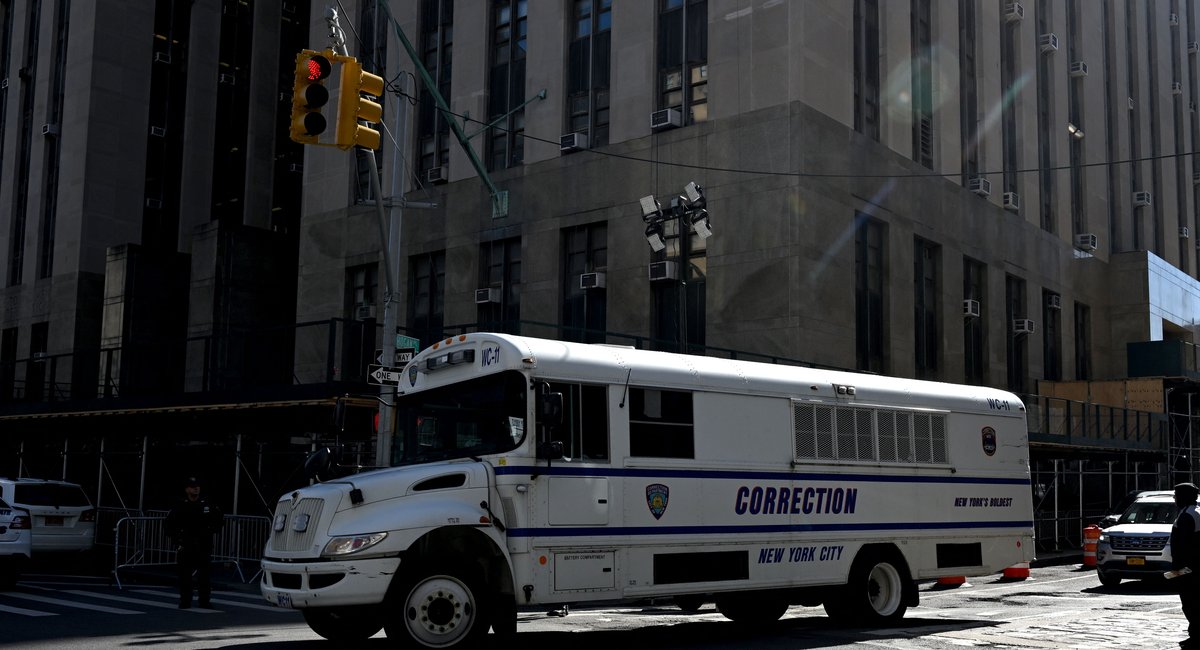Court delays are causing people to languish at Rikers Island for longer than necessary, wasting millions of taxpayer dollars and jeopardizing the city’s plan to replace its jails with more humane facilities, Comptroller Brad Lander’s office reported on Tuesday.
Lander’s office analyzed about 111,000 cases of people discharged from city custody between 2019 and 2023. The number of felony cases that took more than three years to resolve increased by 179% and the time to resolve a murder case went up to about two years and three months, according to the report.
“No one should have to wait three years for their day in court in the inhumane and violent conditions of Rikers Island or anywhere else,” Lander said in a statement. “The increasingly long delays of New York City’s justice system are not only violating the constitutional rights of detainees, they are also wasting hundreds of millions of dollars in taxpayers’ money without making our city any safer.”
The report attributed the delays to pandemic restrictions, which slowed court processes, and recent state law changes that mandate a more expansive exchange of evidence among police, prosecutors and defense attorneys.
Al Baker, a spokesperson for the state Office of Court Administration, said in a statement that the court system “works vigorously every day to decrease case processing times and increase efficiencies to eliminate excessive delays in the adjudication of criminal cases.” Every week, court officials review cases that have been pending for six months or longer, he said.
“Our judges work constantly to keep criminal cases moving forward, by actively managing the discovery process, setting deadlines for filing and responding to pretrial motions and facilitating plea negotiations,” Baker added.
Earlier this year, New York’s chief administrative judge, Joseph A. Zayas, wrote in the policy journal Vital City that there were several reasons for court delays, including a “post-pandemic malaise” that made lawyers more likely to postpone trials for as long as possible. New laws related to evidence sharing had resulted in “significant challenges to efficient case management,” he wrote.
New York City’s jail population dipped to less than 4,000 in 2020 and is now at 6,351, according to a dashboard from the comptroller’s office. The arrest rate has also increased under Mayor Eric Adams, NYPD data shows.
Almost everyone held in city jails has been charged but not yet convicted of crimes. The current detainee population is still far below the 21,000 peak in 1990, yet it is too high to fully transition to the four new jails in Queens, Manhattan, Brooklyn and the Bronx that are slated to replace all of Rikers’ jails in three years. That’s because the planned capacity of those jails is only 4,160.
Lander said the Rikers closure plan has a better chance of succeeding if the courts can more quickly move detainees through the system so that they can either be sent home or to prison. A four-week decrease in case processing could reduce the number of beds needed at Rikers Island by 1,215, according to his report.
If the city followed standards on timeframes set by the National Center for State Courts to dispose of felony cases, the jail population could be reduced enough that the plan to close Rikers could succeed, the report found. The comptroller’s office estimates that the city would save up to $877 million.
The cost to house an incarcerated person is now $507,000 a year, or more than double the $182,000 price tag in fiscal year 2013, according to the report.
“Lengthening the amount of time an individual spends awaiting trial in a New York City jail does not increase public safety or accountability; it simply delays justice and costs the city more money,” the report stated.
Lander is calling on the state court system to create a working group of prosecutors, defense attorneys, correction officials, police officers and mayoral aides to analyze case processing times by borough and implement systemic reforms to speed things up. He’s also calling for officials to better manage case scheduling and attorney access to police records through improved software.
A study published earlier this year in Vital City has many similar findings as the comptroller’s report. It found that detainees’ length of stay in the city’s jails increased years before the pandemic and that in 2022 the average number of days that people spent in jail was more than twice that of the five largest jails in the country.
Mayor Eric Adams has previously criticized the amount of time people spend in jail, writing in a New York Daily News op-ed last year with former state Chief Judge Jonathan Lippman that the timeframe must be reduced to close and replace Rikers.
“The waiting times for detained persons at Rikers to have their day in court are far too long, inflating the jail population and keeping crime victims waiting for accountability,” they wrote. “That must change.”
At the Mayor’s Office of Criminal Justice, First Deputy Director Carolina Chavez released a statement saying the office is already working with officials to address the issue, and cited COVID-related delays and reforms to discovery laws for the slowdown in case processing.
“These disruptions changed the underpinnings of the justice system in New York City,” the statement said. “We look forward to reviewing the report.”
